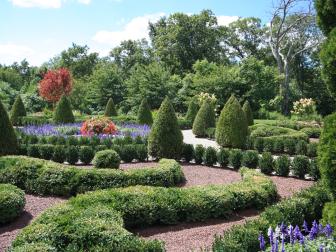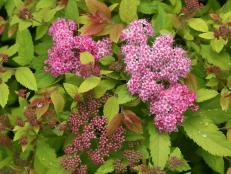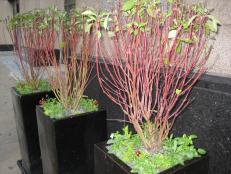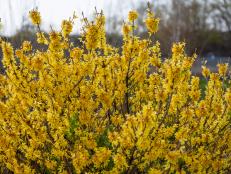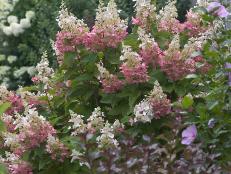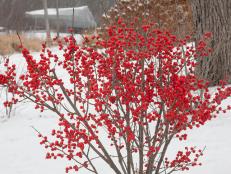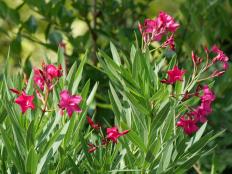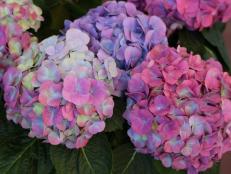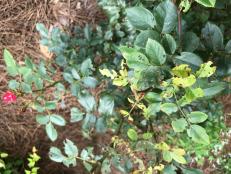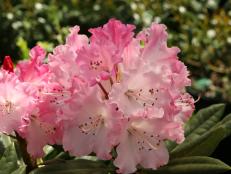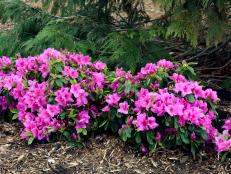Growing Boxwoods
For sun or partial shade, boxwoods are some of the most popular evergreen shrubs to grow in landscapes and gardens.
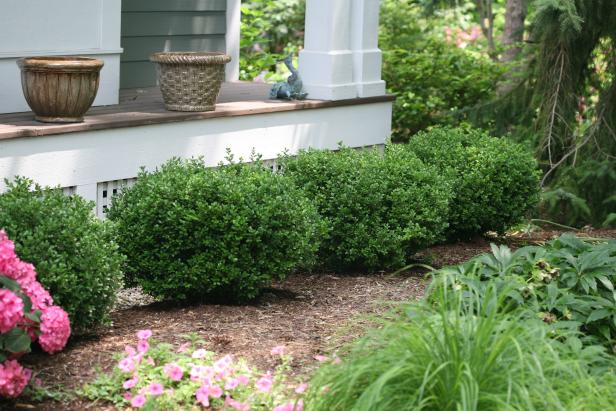
ProvenWinners.com
These 'Sprinter' boxwoods grow fast but keep their shape without much maintenance.

Boxwood is a broadleaf evergreen shrub that’s easy to grow. Native to Europe, South America, Asia and Africa, boxwood is in the Buxus genus (box is the English word for Buxus). There are hundreds of varieties, although garden centers and nurseries typically carry only a small selection. In general, boxwood shrubs grow from 2 to 8 feet tall and wide and are hardy in USDA Zones 5 to 9.
20 Ideas for Fabulous Boxwood Designs 20 Photos
Discover ways to trim boxwoods and how to use them as dramatic punctuation in the garden.
Boxwood shrubs are popular in casual and formal gardens, where you can use them as hedges, borders, edgings, specimen plants or topiaries. Plant small boxwoods in pots or window boxes. In the winter, boxwood shrubs add structure to the garden; in summer, they provide a green backdrop for tall perennials. Plant a common boxwood (Buxus sempervirens) and let it grow to create a boxwood tree. Deer tend to avoid boxwood since their leaves contain a bitter alkaloid.
How to Plant Boxwood
Spring is the best time to plant boxwood. If your boxwood bush comes balled in burlap, take it out and gently loosen any tangled roots. Next, dig a hole 6 inches wider and deeper than the root ball. If your soil drains poorly, mix in some peat moss and manure. Add topsoil to loosen heavy soil.
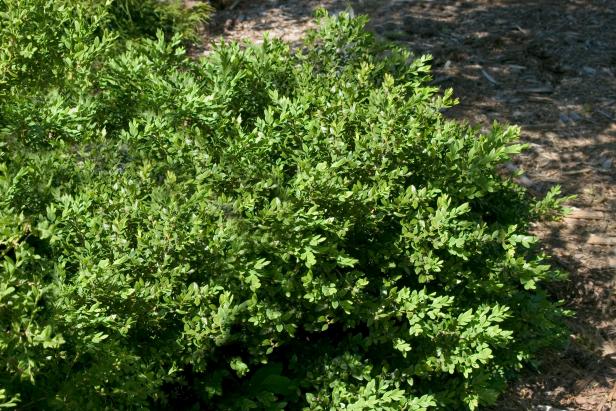
Bailey Nurseries, Inc.
'Green Velvet' boxwood has a naturally rounded form that can be pruned into a low hedge.
Fill the hole 1/4 full of water and toss in a shovelful or two of the materials listed above, if needed to improve the soil.
Because boxwood bushes have shallow roots, plant them so the root ball is only 1/8 of an inch above the surface of the soil. They’ll settle after planting, but this will keep them from getting too deep. Gently firm the soil around them and water.
Cover the roots with 3 inches of mulch to keep the roots cool and hold in moisture. Replace the mulch if you see signs of disease or pests.
Tips for success: Don't plant too deeply and don't let box roots stay wet.
Light
Boxwood plants can take full sun to part shade but prefer five or six hours of full sun every day. In hot climates, plant where there's some afternoon shade. In a climate with dry winter winds, choose a protected site.
Soil
Boxwood bushes must have soil that drains easily. While they grow best in sandy loam, they’ll tolerate a variety of soils. They prefer slightly alkaline soil.
Water
In the first year after planting, water boxwood deeply once or twice a week. In the second year, water weekly if rainfall is scarce. After that, water only if needed, or if you have sandy soil that drains too fast. Use drip irrigation or a soaker hose for best results. Water from a hose or sprinkler runs off too fast.
Fertilize
Boxwood bushes usually have insignificant or few flowers, so you don’t have to fertilize them. But if desired, apply a slow-release, balanced fertilizer once or twice a year or as directed on your product. Water thoroughly. You can also top-dress with manure in the fall.
Containers
Plant boxwood in large containers with excellent drainage and use a good potting mix. Containers are more likely to dry out or freeze in the winter than plants in the ground, so you may need to move your boxwood shrub to a warmer spot, such as a garage, when the temperatures drop or the winter winds become harsh.
Pruning and Trimming Boxwood
Many of today’s boxwood plants have been bred to be compact, so they don’t need a lot of pruning. They're often healthier, too, than heavily pruned older types.
Remove dying or diseased branches and trim boxwood hedges or topiaries as needed. Trimming boxwoods also lets you control the size of a boxwood tree.
Pests of Boxwood Shrubs
The worst boxwood pest is the boxwood leafminer, which creates small “blisters” filled with tiny maggots on foliage. When they emerge as adult flies, the leafminers make blotchy “mines,” or tunnels, in the leaves, often causing them to drop. Prune off new, infected growth in spring and dispose of the cuttings. Some insecticides listed for adult leafminer control may help, but you must time the application properly; the adults don’t live long. Look for boxwoods that are leafminer-resistant, such as ‘Suffruticosa.’
Psyllids are small insects that feed on sap, causing leaves to cup. Prune away damaged branches and spray new growth in spring with a horticultural oil or soap.
Before new growth appears in spring, drench the soil around box plants with system insecticide. This may help prevent leafminers and psyllids.
Nematodes are tiny worms that eat plant roots, causing foliage to turn bronze and plants to become stunted. There’s no cure, but good watering, mulching and fertilizing practices can help control them.
Diseases of Boxwood Shrubs
Volutella blight turns leaves on branch tips red, then bronze and yellow. Branches often die. Thinning and trimming box plants helps increase air circulation and lets more sunlight into the plant centers.
Phytophthora turns branches dull, then pale green and tan. This fast-spreading disease occurs in wet or compacted soils and usually kills the boxwood shrub. A systemic fungicide soil drench may help, although most box bushes will eventually die anyway. Don’t replant boxwood in the same area.
Boxwood blight causes leaf spots and stem cankers. Leaves drop and boxwoods die. It’s non-curable, so remove the diseased plant. Don’t replant boxwood where blight has occurred. English boxwoods seem to be more susceptible than Japanese and Korean species.
Types of Boxwood Shrubs
American (B. sempervirens), or common box, is a rounded shrub that can grow to 15 feet or more. English boxwood, B. sempervirens ‘Suffruticosas', is a dense, dwarf boxwood that reaches 2 to 3 feet tall and 2 to 4 feet wide. Technically, it's a form of American boxwood.
American boxwood tolerates cold better than English boxwood, so it's a good choice for northern regions. The American type can grow into a boxwood tree, but you can prune it to stay smaller.
Korean boxwood (B. sinica var. insularis) has a somewhat open branch structure and finely textured leaves. It grows about 2 feet tall and slightly wider. Korean boxwood bushes are hardy to Zone 4.
Japanese boxwood shrubs, (B. microphylla var. japonica), also called Littleleaf boxwoods, have fine-textured leaves. Hardy in zones 6 to 9, they typically reach 5 to 6 feet tall and 4 to 6 feet wide.
How to Propagate Boxwood Shrubs
While you can propagate boxwood shrubs for your own use, remember that it’s illegal to propagate and sell patented plants.
Since boxwood cuttings can be stubborn to root, take extras. Midsummer is the best time to cut 3- to 4-inch-long tips of new, healthy growth. Use a sharp knife; shears can compress the ends so they can’t absorb water.
Pull the leaves off the lower two inches of each stem. Also, scratch off the bark from one side of each stem. Dip the cut ends in powdered rooting hormone and insert them in a rooting medium that drains easily. Don’t use nutrient-rich potting soil, which can encourage rotting.
Put 3 cuttings per 6-inch pot into a plastic bag and close it to hold in moisture. Open it daily and mist the cuttings with water. After three weeks, gently tug on each one. If you feel resistance, roots have formed and it's time to remove the bag. Plant the rooted cuttings in individual pots of potting soil. Keep them in a bright window until you’re ready to plant outside.
More Types of Boxwoods to Grow
Unless otherwise noted, these boxwoods are hardy in USDA Zones 5 to 9.
‘Green Beauty’ (B. microphylla var. japonica) — Great for small hedges. Grows 4 to 6 feet tall and wide. Foliage takes on a bronze tint when the temperatures drop. More heat-, drought- and humidity-tolerant than many other varieties.
'Green Mountain’ (B. x ‘Green Mountain') — Often used in formal landscapes. Natural cone-shaped habit; good for topiaries or containers. Grows 5 feet tall and 3 feet wide if unpruned. Hardy to Zone 4.
‘Winter Gem’ (B. microphylla var. japonica ‘Winter Gem’) — Fast-growing, rounded in shape and boxwood blight-resistant. Good as a sheared hedge. Grows 4 to 6 feet tall and wide.
‘North Star’ (B. sempervirens) — Dense and globe-shaped, this dwarf grows 2 to 2.5 feet tall and wide. Good blight resistance.
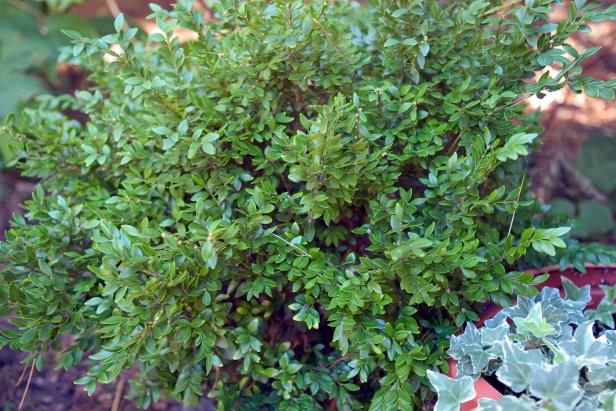
Bailey Nurseries, Inc.
'Chicago Green' boxwoods are grown in the Chicago Botanic Garden for their excellent ability to tolerate the cold.
'Chicago Green’ (B. x ‘Glencoe’) — Dense, cold hardy to Zone 4 and reaches 3 to 4 feet tall and wide. Glossy green foliage makes it a great foundation plant or backdrop for perennials.
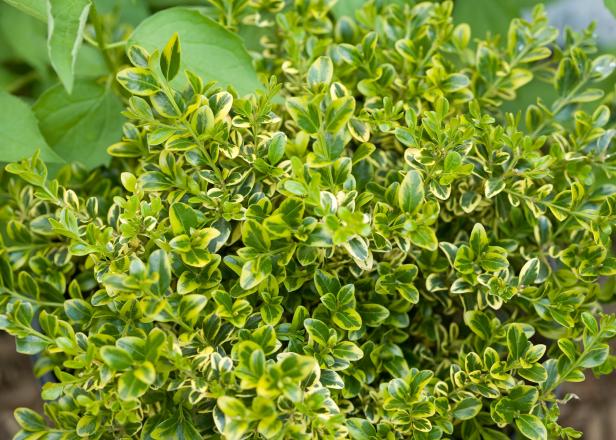
ProvenWinners.com
'Wedding Ring' boxwood's green leaves have lime margins that deepen to gold in the summer.
'Wedding Ring’ (B. microphylla var. koreana) — Matures at 1 to 3 feet high and wide. Variegated foliage and a mounding growth habit.
'Sprinter’ (B. microphylla) — An improved form of ‘Winter Gem.’ Easily trimmed into a privacy hedge. Fast growing but holds its form with little trimming. Relatively pest- and disease-free. Grows 2 to 4 feet tall and wide.






